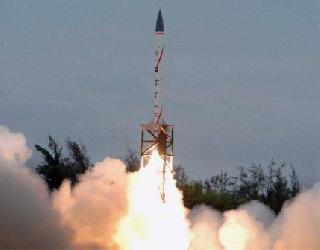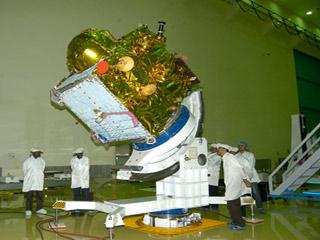
Prahar is a short-range surface-to-surface missile developed by DRDO. Photo: PTI.
NEW DELHI (PTI): Seeking to enhance its precision strike capabilities, India is planning to replace its 150 km-range Prithvi ballistic missiles with the newly developed quick reaction Prahar missiles.
"We are withdrawing the tactical 150 km-range Prithvi missiles and will replace them with the Prahar missiles, which are more capable and have more accuracy," DRDO chief Avinash Chander told PTI here.
The tactical versions of the Prithvi missiles would be withdrawn from service and will be upgraded to be used for longer ranges, he said.
The DRDO chief said after the withdrawal of the tactical ballistic missiles from service, there would be a gap in strike capabilities in the range of 100 to 150 km-range.
"The Prahar missile would be used to fill up that gap," he said.
The 150 km-range 'Prahar' is a single-stage missile and is fuelled by solid propellants. It was first test-fired by DRDO in mid-2011 from its range in Odisha.
The uniqueness of the missile system is that it can be fired in the salvo mode also from one launcher vehicle in which four missiles can be fired in one go.
This short-range missile would be an 'excellent weapon' which would fill the gap between the 90 km-range of the Smerch multi-barrel rocket launchers and guided missiles like 'Prithvi', which can strike at 250 km to 350 km range.
The under-development Prahar missile would be offered to the Army for user trials very soon and after its acceptance, it is planned to be part of its Corps of Artillery.
The Prithvi missiles were developed by India under its Integrated Missile Development Programme in the 1980s. The ballistic missile was developed with multiple strike ranges from 150 km to 350 km.
The longer ranges are planned to be in service with both the Army and the IAF.
 Previous Article
Previous Article Next Article
Next Article













The Indian Air Force, in its flight trials evaluation report submitted before the Defence Ministry l..
view articleAn insight into the Medium Multi-Role Combat Aircraft competition...
view articleSky enthusiasts can now spot the International Space Station (ISS) commanded by Indian-American astr..
view article